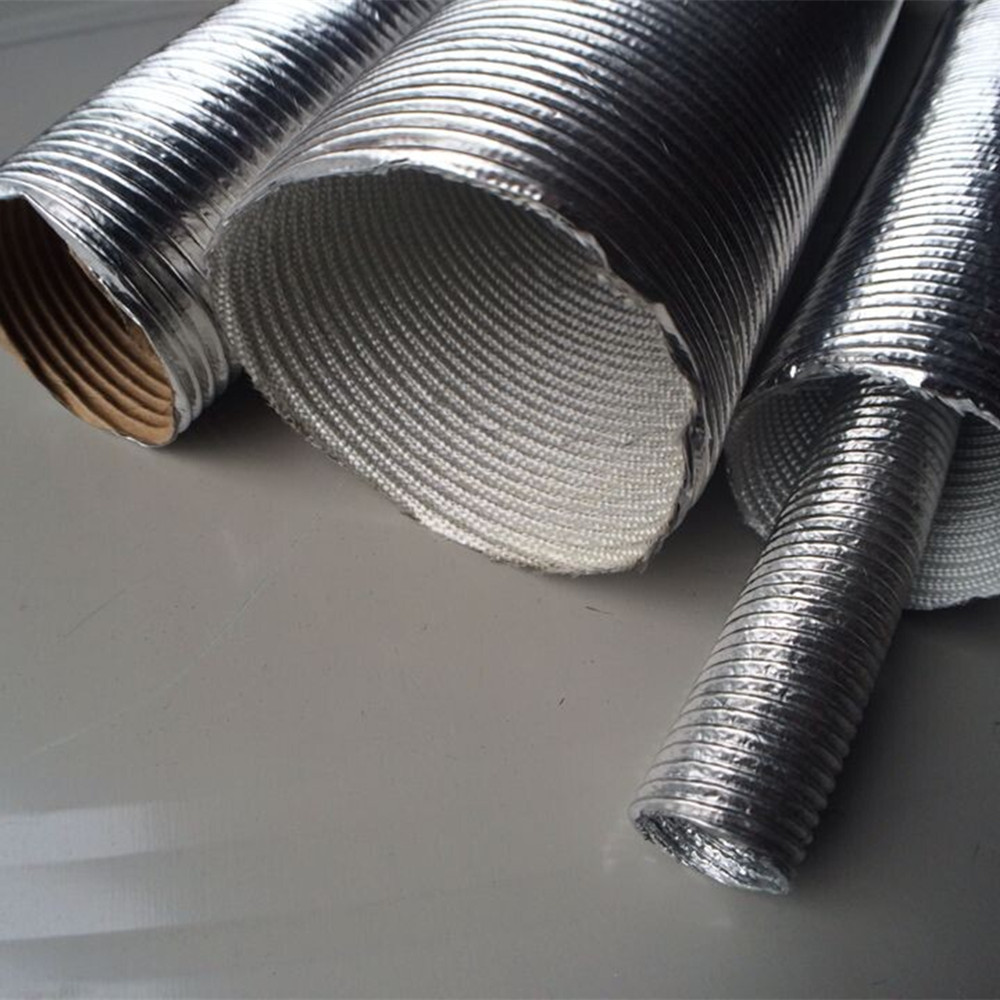Diesel heater hot air ducting is typically made from a combination of heat-resistant materials designed to withstand high temperatures and harsh conditions. The most common materials used in its construction include:
Aluminized Fiberglass: This material is often used because of its excellent heat resistance, durability, and ability to reflect heat away from the ducting. It helps to maintain the temperature of the air being transported while also providing protection against external heat sources.
Silicone-Coated Fiberglass: This combination offers both flexibility and high heat resistance. The silicone coating enhances the ducting’s ability to endure extreme temperatures and provides additional protection from abrasion.
Stainless Steel Wire: Some ducts have a spiral or braided stainless steel wire reinforcement, which adds strength, flexibility, and resistance to crushing or deformation.
PVC or Polyurethane (PU): For less extreme applications, some ducting may use a combination of flexible PVC or PU lining. These materials can still handle a range of temperatures, but they are generally not as high-performance as fiberglass or silicone-based materials.
These materials work together to ensure the ducting can effectively carry hot air from the diesel heater to the designated area, while withstanding the high temperatures associated with the exhaust and air being channeled.
